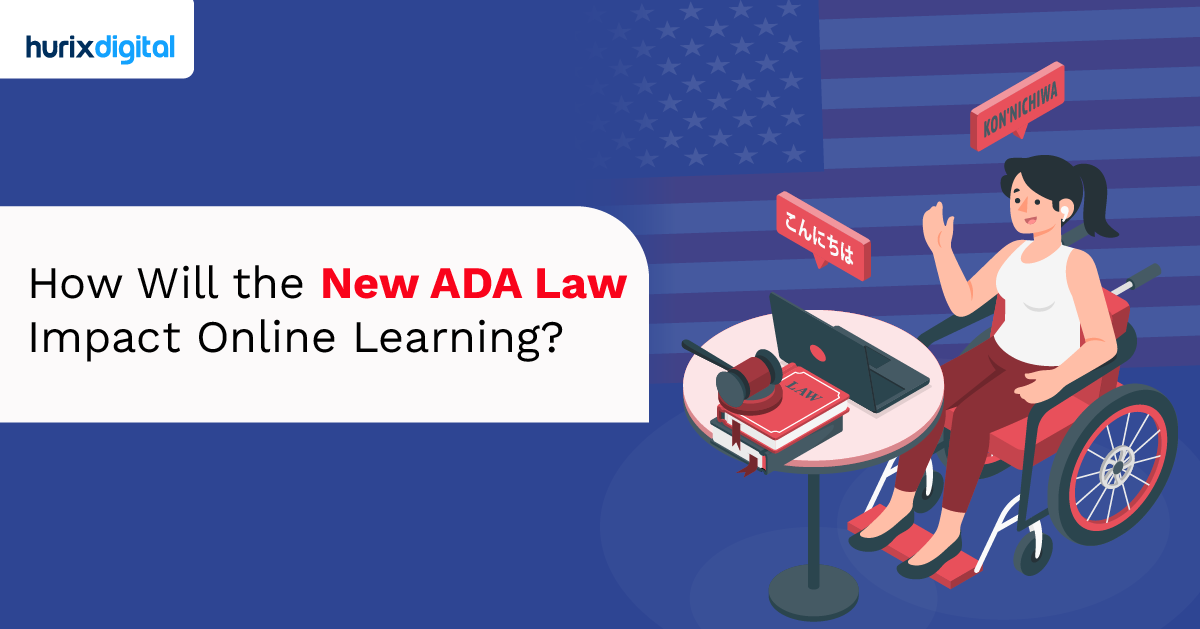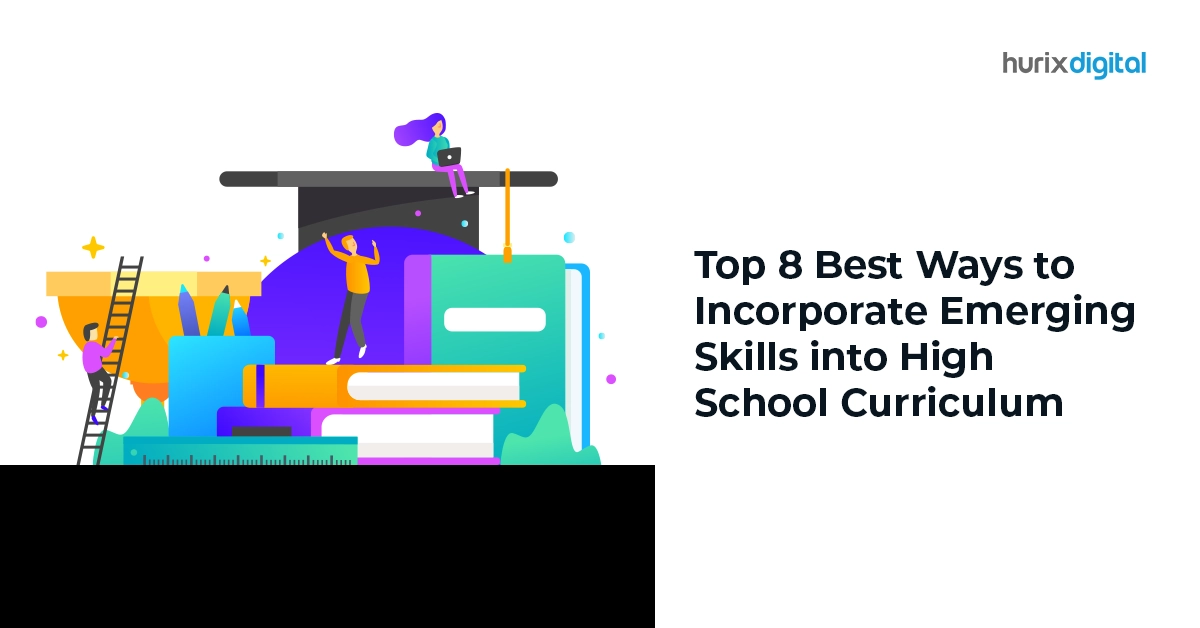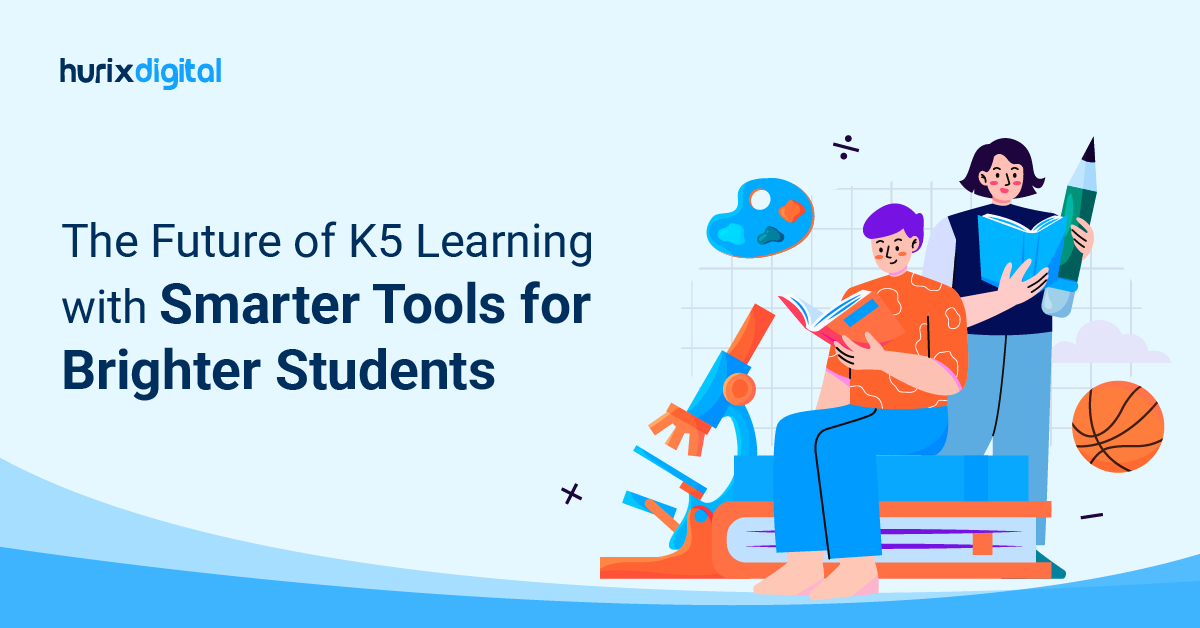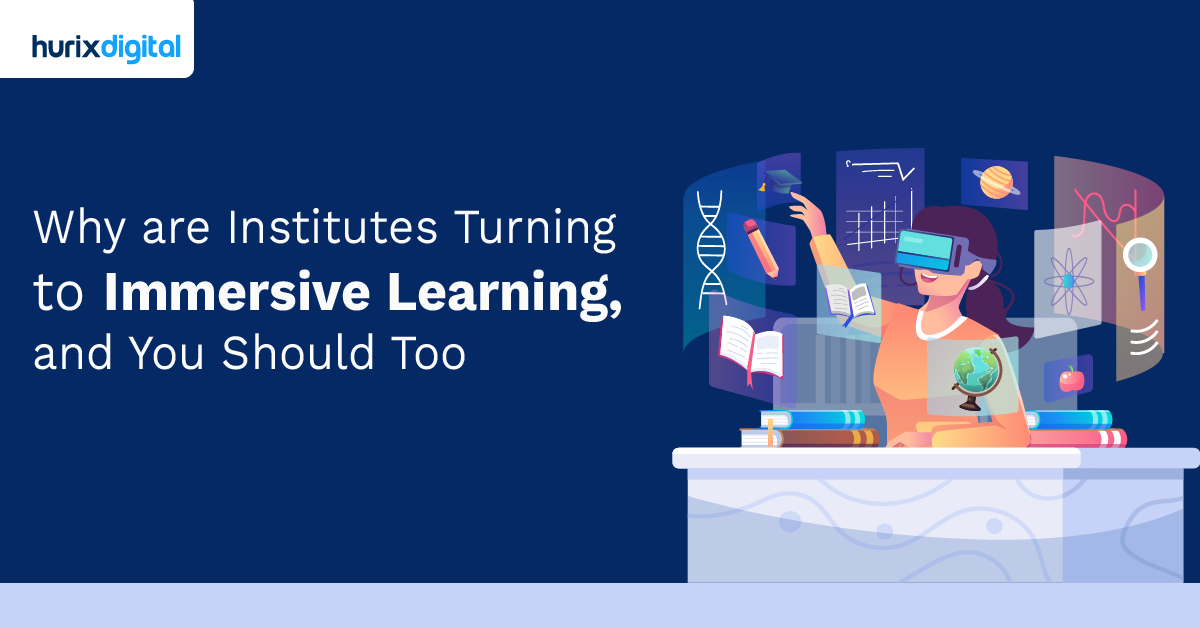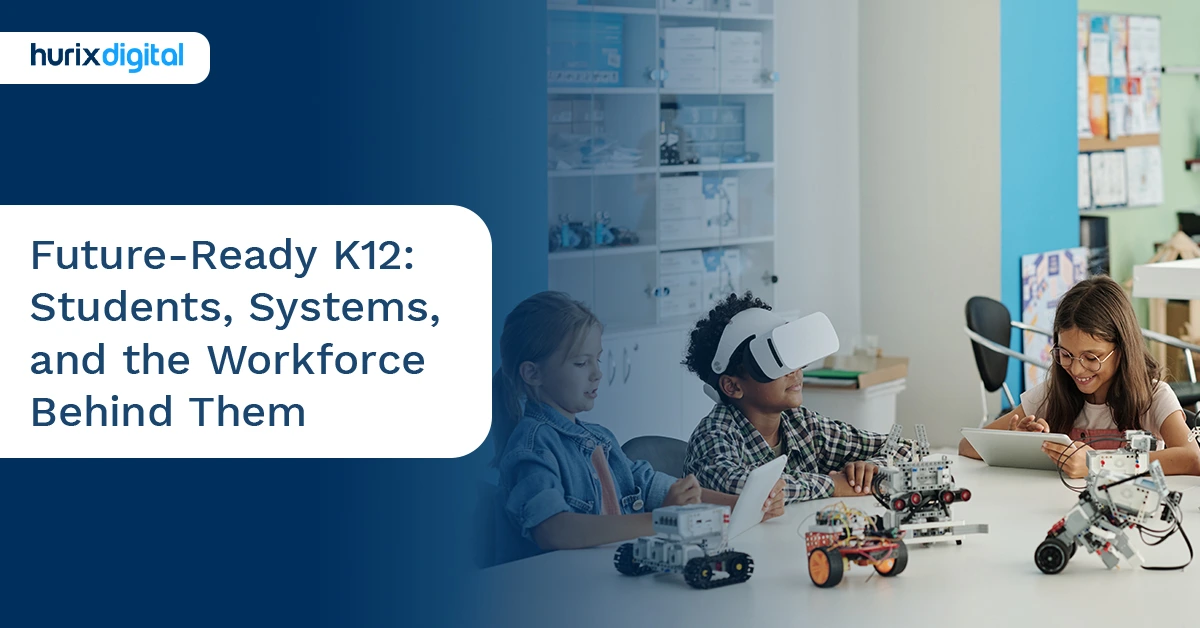
Future-Ready K12: Students, Systems, and the Workforce Behind Them
Summarize with:
A student’s academic path marks a major turning point when they move from K12 education to higher education. Moving abruptly from a relatively restrictive schedule to an educational system with more freedom can feel overwhelming. Therefore, schools should consider multiple K12 education technology strategies to streamline the process to offer more direction and support the significant transition.
According to a report by the National Center for Education Statistics (NCES), students who engage in college preparatory activities during high school are more likely to enroll in and complete higher education programs.
This article explores the best K12 education strategies for students for higher education, along with some best practices for building an equitable and efficient K12 workforce.
Table of Contents:
- Preparation of K12 Strategies for Higher Education
- Study Skills Development
- Career Exploration
- College Prep Programs
- Student Support Services
- Future-Readiness
- Academic Planning
- Leveraging Data and Analytics
- What is Digital Equity in Schools?
- Top Strategies for Enhancing Tech Accessibility in Education
- Top Resources for Inclusive Education Technology
- The Importance of Procurement in Education
- 5 Crucial Education Procurement Strategies
- 3 Best Practices for Building a K12 Educational Workforce
- Conclusion
Preparation of K12 Strategies for Higher Education
Getting K12 students ready for college requires multifarious strategies, including building critical thinking abilities and encouraging real-world relationships. These techniques help ensure that students are ready to meet the rigors of college.

1. Prioritizing Critical Thinking and Problem-Solving Skills
Preparing for higher education requires critical thinking and problem-solving skills. Students should be encouraged to think for themselves and be responsible for their choices. A strong ability to think critically helps students overcome the intellectual demands of college courses.
In K12 schools, integrating inquiry-based learning (IBL) and project-based learning (PBL) can support students in developing these skills by identifying and evaluating their knowledge.
2. Incorporating Technology
Learners familiar with digital tools and resources will be more comfortable meeting higher education’s technological demands. Schools should incorporate digital literacy activities so that students can learn how to use educational tools effectively.
Study Skills Development
Academic achievement in higher education depends on one’s ability to study well. To fulfill college courses’ higher expectations, students must learn excellent time management skills and remain orderly.
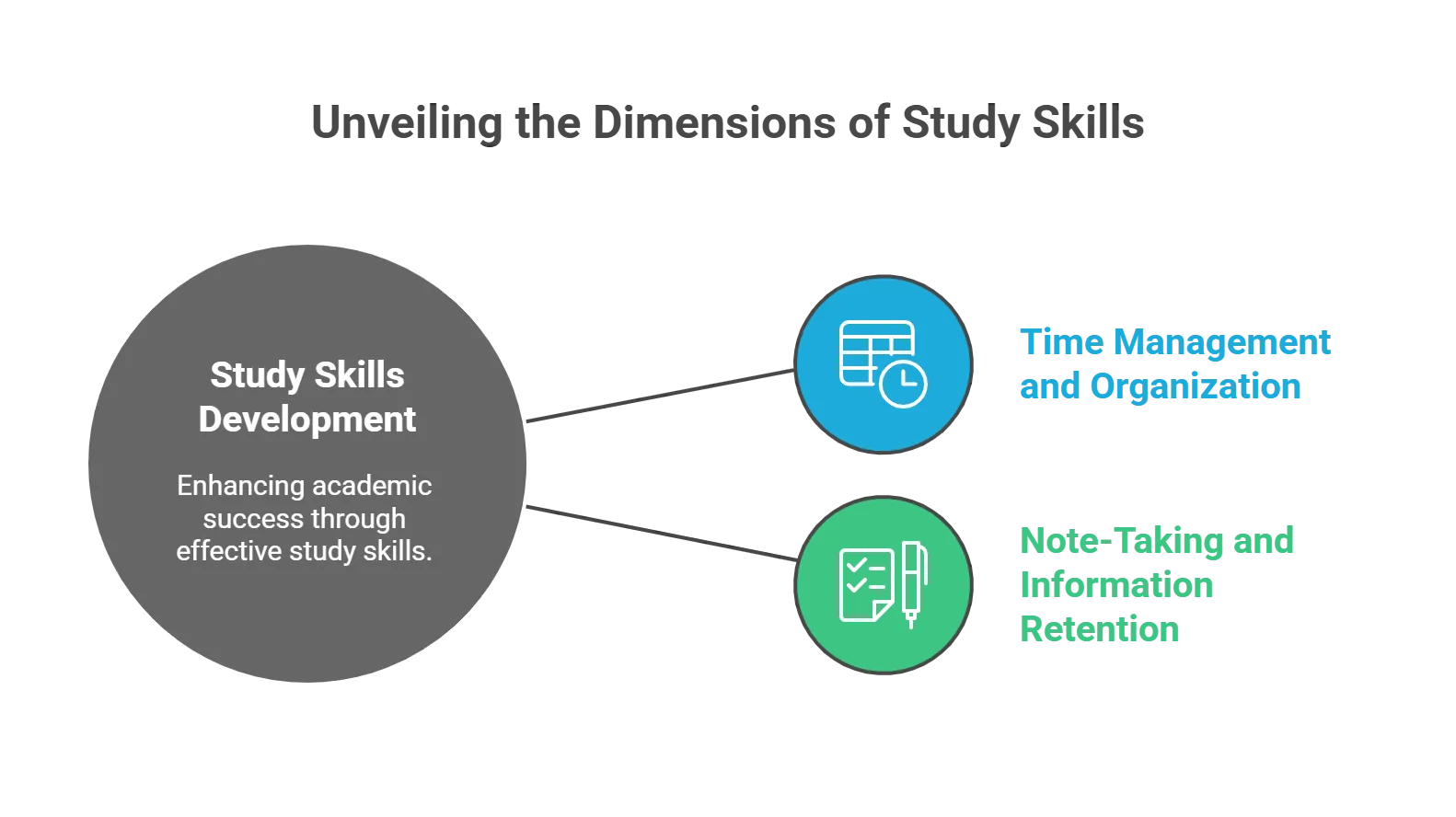
1. Time Management and Organization
Academic achievement in higher education depends critically on efficient time management and organizational ability. Students who stay organized and effectively manage their time are more likely to graduate with honors and finish their degrees on schedule. Schools can help students acquire these abilities through instruction in study planning, goal setting, and task prioritizing.
2. Note-Taking and Information Retention
Note-taking is an important study habit, helping develop a more determined mindset while improving understanding and memory. Exam performance improves, and long-term memory retention increases for students who meticulously note material. Schools should teach several note-taking techniques, such as the Cornell Note-Taking System, to enable students to gather and arrange knowledge efficiently.
Career Exploration
Through career research, students can make wise decisions about their future and grasp the breadth of opportunities open to them.
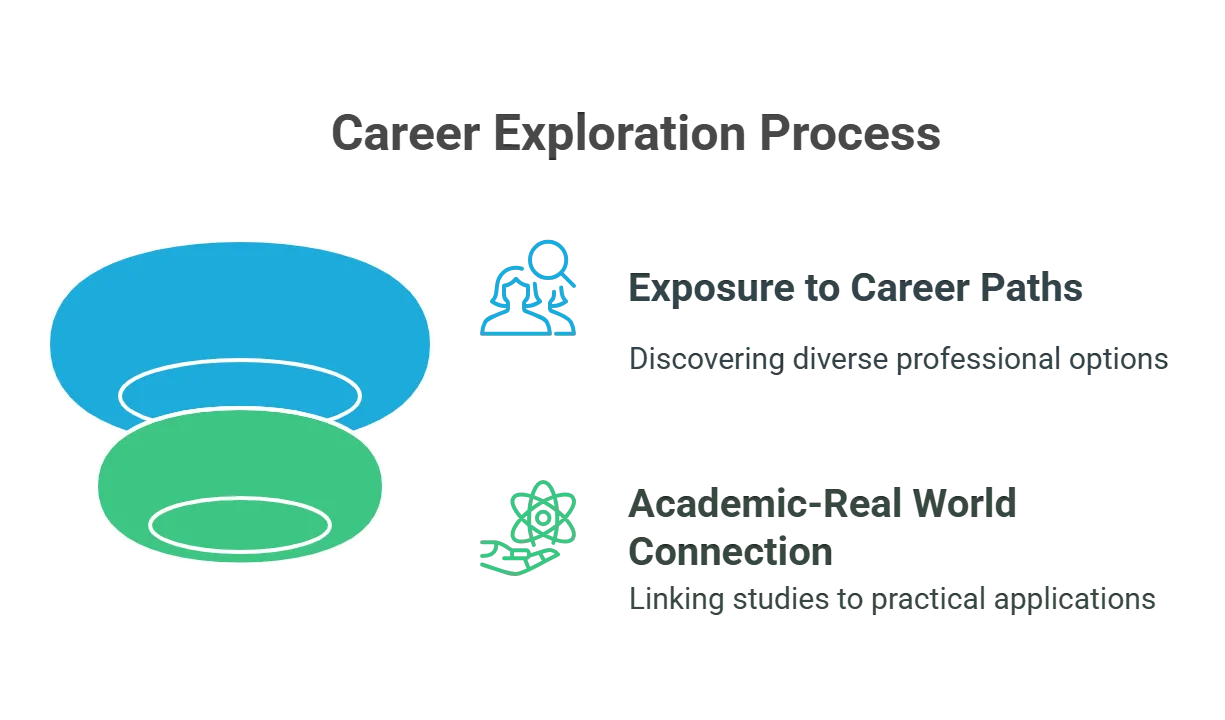
1. Exposure to Various Career Paths
Preparing for higher education depends critically on career exploration. Early exposure to many professional pathways enables students to make well-informed future decisions. Schools may help students explore their futures through career fairs, job shadowing programs, and guest speaker invitations from several sectors.
2. Linking Academic Subjects to Real-World Applications
Connecting academic courses to useful applications helps students better understand how relevant their education will be for their future jobs. Students who believe their studies will be applicable for future employment are more involved in their education. Real-world case studies and useful applications should be included in courses at schools so that students may establish these links.
College Prep Programs
College prep programs help K12 students prepare for their lives in higher education and beyond.
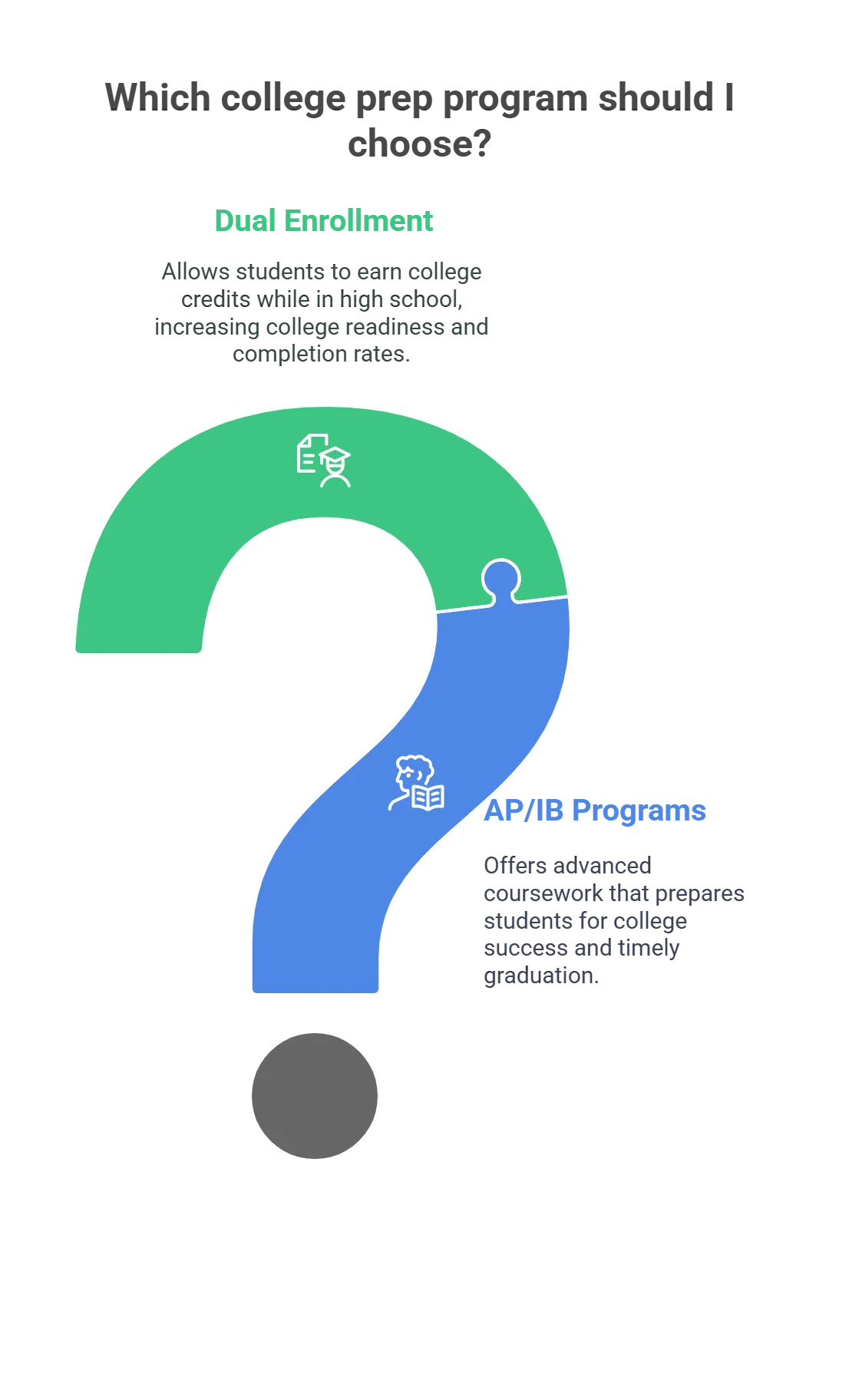
1. Advanced Placement (AP) and International Baccalaureate (IB) Programs
Students in advanced programs are able to take more involved classes that are meant to get them ready for college. The College Board says that students who take AP classes are more likely to finish on time and do well in college.
2. Dual Enrollment Programs
High school students can participate in dual enrollment classes and accumulate credits before graduating. Dual enrollment program participants are more likely to be college-bound, tenacious through their studies, and finish their degrees. Schools should encourage dual enrollment options and help pupils negotiate college material properly.
Student Support Services
Student support services can help students feel ready for college by taking care of their mental and social needs.
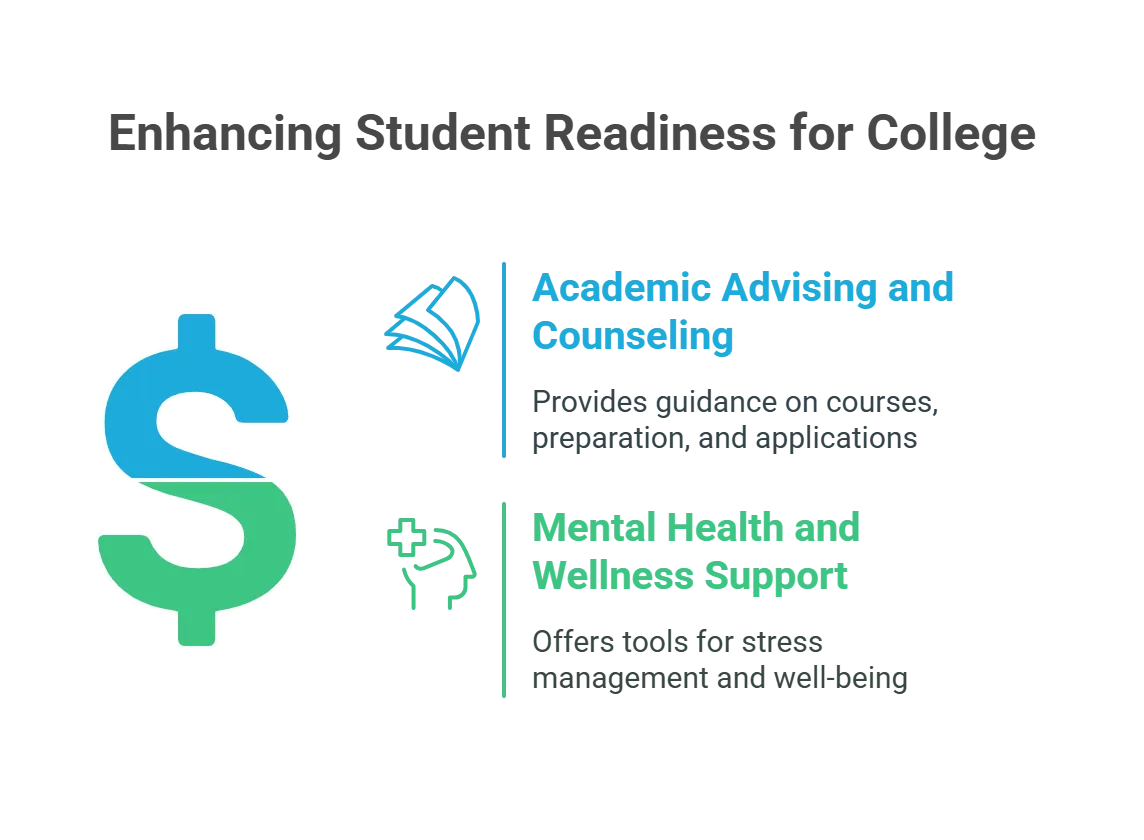
1. Academic Advising and Counseling
Excellent academic advice and counseling services are critical for higher education preparation. Regular academic counseling might enable students to stay on target for graduation. Schools should provide thorough advising services covering courses of study, academic preparation, and college applications for each student.
2. Mental Health and Wellness Support
Students who have access to mental health treatments are better suited to control their stress and engage academically. Schools should offer mental health tools to help students’ general well-being, including wellness programs, stress-management seminars, and counseling services.
Future-Readiness
Learners should be provided with the tools and information they need to navigate life outside of the K12 classroom.
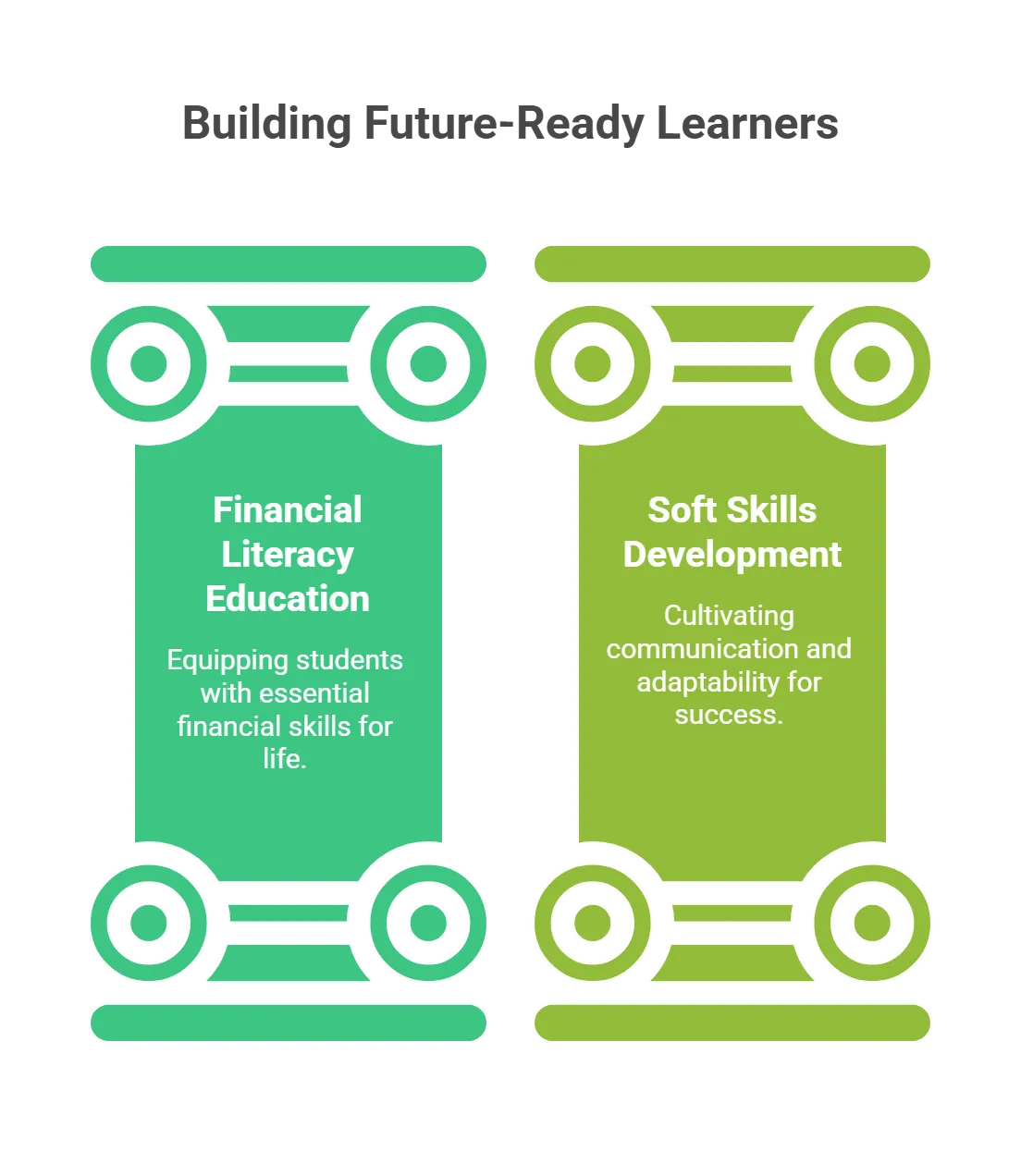
1. Financial Literacy Education
Financial literacy is critically important for future readiness. Strong financial literacy among students helps them be better suited for handling their money both in college and outside. Teaching students about budgeting, saving, investing, and loan management will help schools include financial literacy instruction in their courses.
2. Soft Skills Development
Higher education and employment success depends on soft skills, including communication and adaptability. Companies highly value these abilities, so they’re always on the lookout for such applicants. Schools should emphasize soft skill acquisition through group projects, extracurricular activities, and leadership development opportunities.
Academic Planning
Academic planning is all about setting goals and building a road map for attaining them. Students must routinely review and change their academic strategies to stay on target.
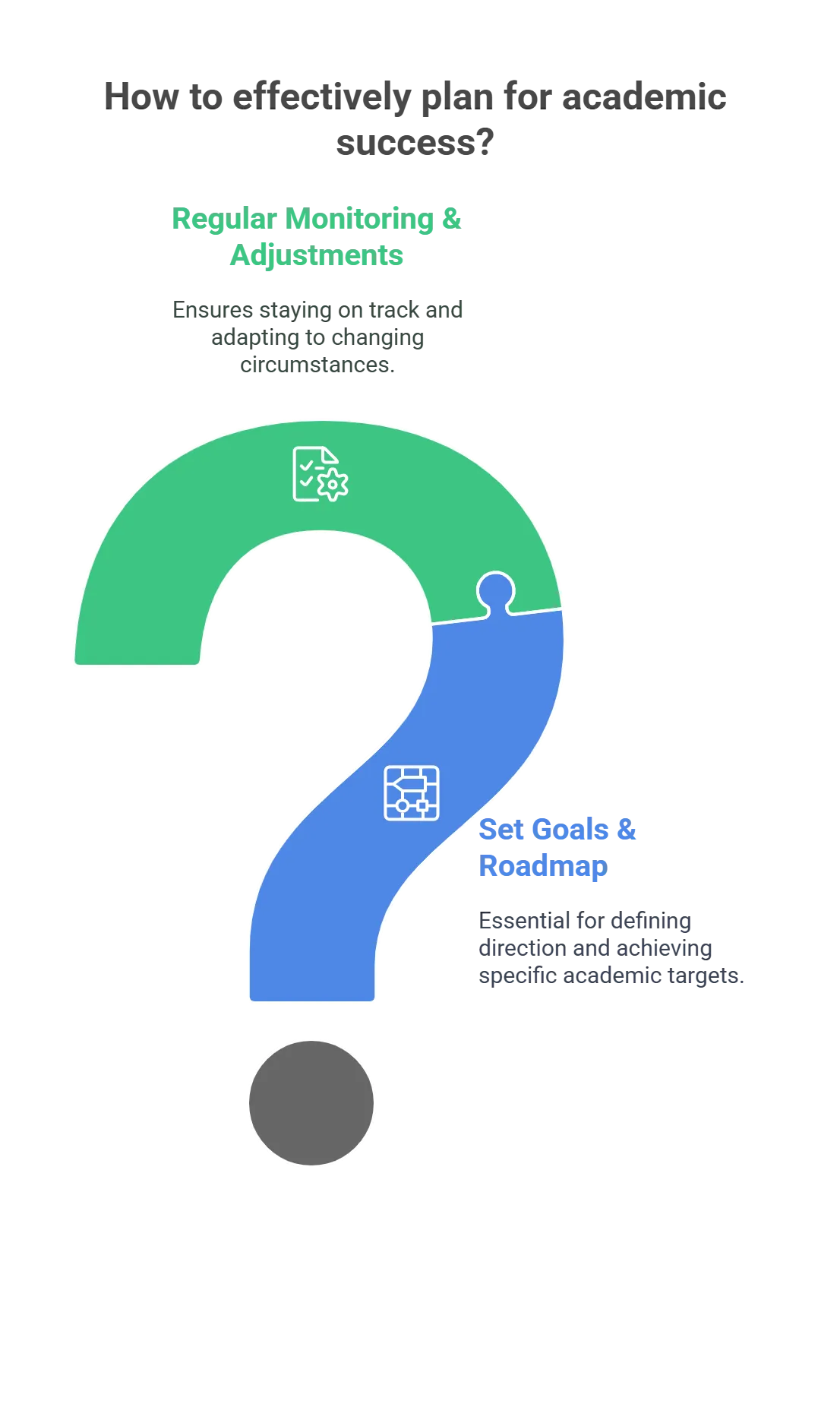
1. Setting Academic Goals and Creating a Roadmap
Essential elements of academic planning are developing a road map and defining goals. Students who develop a strategy to reach specific academic goals and set them themselves are more likely to succeed in higher education. Schools should assist students in determining their professional and academic goals and provide a detailed road map to achieve them.
2. Regular Monitoring and Adjustments
Regular monitoring and adjustment of academic plans are necessary to ensure that students stay on track. Regular assessment and modification of their academic plans help students stay committed to their education and finish on time. Schools should provide continuous support and direction to enable students to track their progress and make necessary changes.
Leveraging Data and Analytics
By guiding instruction and allowing early interventions, using data and analytics can greatly improve educational results.
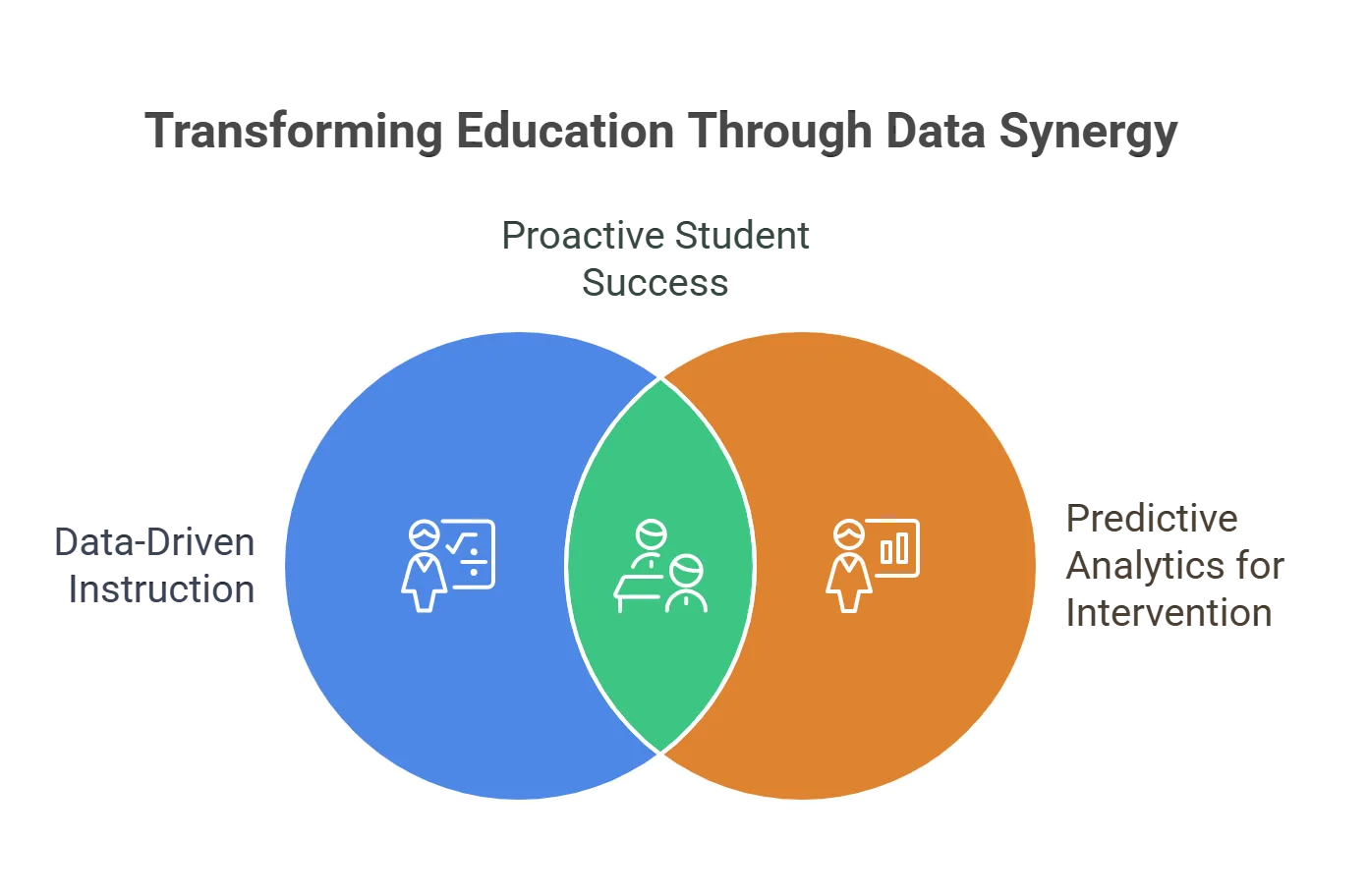
1. Using Data to Guide Instruction
Data and analytics can offer insightful analysis of student performance that shapes teaching plans. Data-driven instruction enables schools to improve student outcomes significantly. Schools should use data to identify areas where students need additional support and adjust their teaching methods accordingly.
2. Predictive Analytics for Early Intervention
Predictive analytics can enable early intervention and risk identification for students at risk of falling behind. Schools can use predictive analytics to target interventions and increase student success rates more precisely. Schools should utilize predictive analytics techniques to monitor student performance and provide immediate assistance to those in need.
What is Digital Equity in Schools?
Even though electronic devices are becoming more and more commercialized, not every pupil has a chance to use them at home. The extent to which students use digital tools—including hardware and software—is gauged by their digital access.
Hence, all school-going students should have equal access to technology and data, regardless of their physical competence, age, socioeconomic standing, race, or other attributes. It is essential for educational opportunities and key in helping students gain the required abilities to grow into tech-savvy citizens.
Inequitable access to technology robs students of educational possibilities and may even restrict their options beyond K12. The requirement for online learning exacerbates the inequality even more.
There is more to providing students access to technology. It is not just about giving them appliances and the internet. Digital equity also entails ensuring that each student gets the chance to acquire knowledge from an educator proficient in technology use.
Top Strategies for Enhancing Tech Accessibility in Education
Educational institutions can foster inclusive education technology for students with different skills by implementing these strategies:
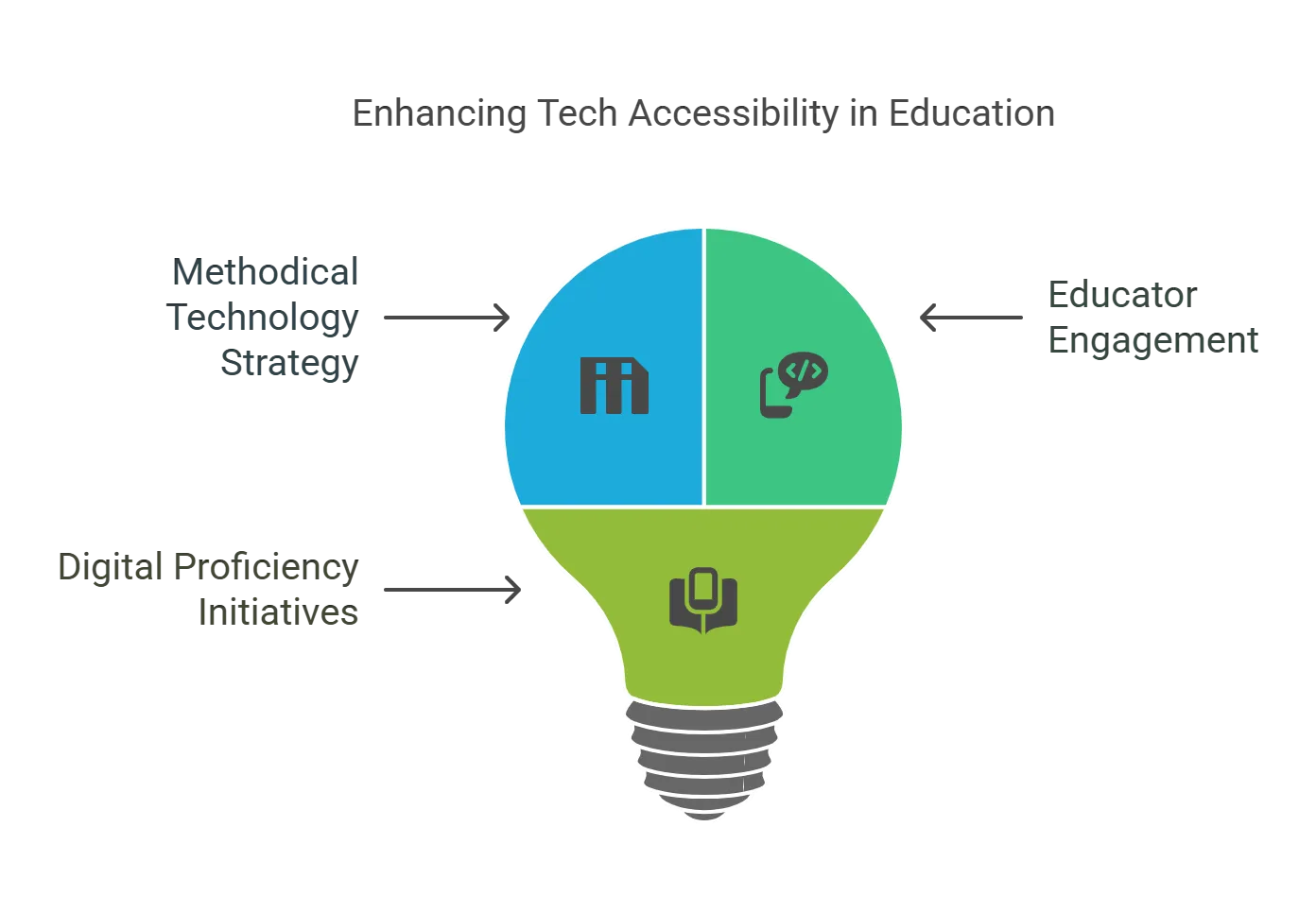
1. Create a Methodical Technology Strategy
If you work as a director of educational program development, you should encourage your district or school to create a broad-based technology schedule. Make sure you base it on guidelines that cover the necessary steps to give students fair access to technology.
Fundamentally, these guidelines should specify who to contact for assistance in obtaining access, guarantee that people are aware of how to use the technology, and be sufficiently adaptable to take into account students’ various educational needs and learning preferences.
2. Engage the Educators
The teacher is the mediator between learners and the school administration. They are acutely aware of the students’ requirements and skills and are connected to them. Teachers and school administrators should collaborate to create programs supporting students’ equitable technology access.
Ensure you confer with the appropriate educators supervising pupils in the targeted campaign area.
For instance, before investing in software enhancing literacy abilities, school administrators should consult with their English department. Though it might seem obvious, a lot of schools wind up buying out-of-date or unnecessary technology because they neglected to consult with teachers before making the purchase.
3. Launch Initiatives for Digital Proficiency
Even though we live in a technologically advanced society, many American students struggle with using digital tools. Some things that make students uncomfortable using technology include poor comprehension of English and a lack of funds to buy digital tools.
Teachers are frequently mindful of which students are not proficient with technology. Thus, it would be wise to put in place digital literacy initiatives that help pupils get up to speed on technology.
Some schools offer an after-school program where students can learn the fundamental computer skills they need.
Top Resources for Inclusive Education Technology
The difference in students’ access to technology and digital resources is known as the “digital divide” in K12 classrooms. This disparity may make it more difficult for students to take advantage of educational opportunities and engage fully in online learning.
Teachers can use various technologies in K12 classrooms to address students’ diverse learning needs and contribute to creating an inclusive learning environment to close this gap.
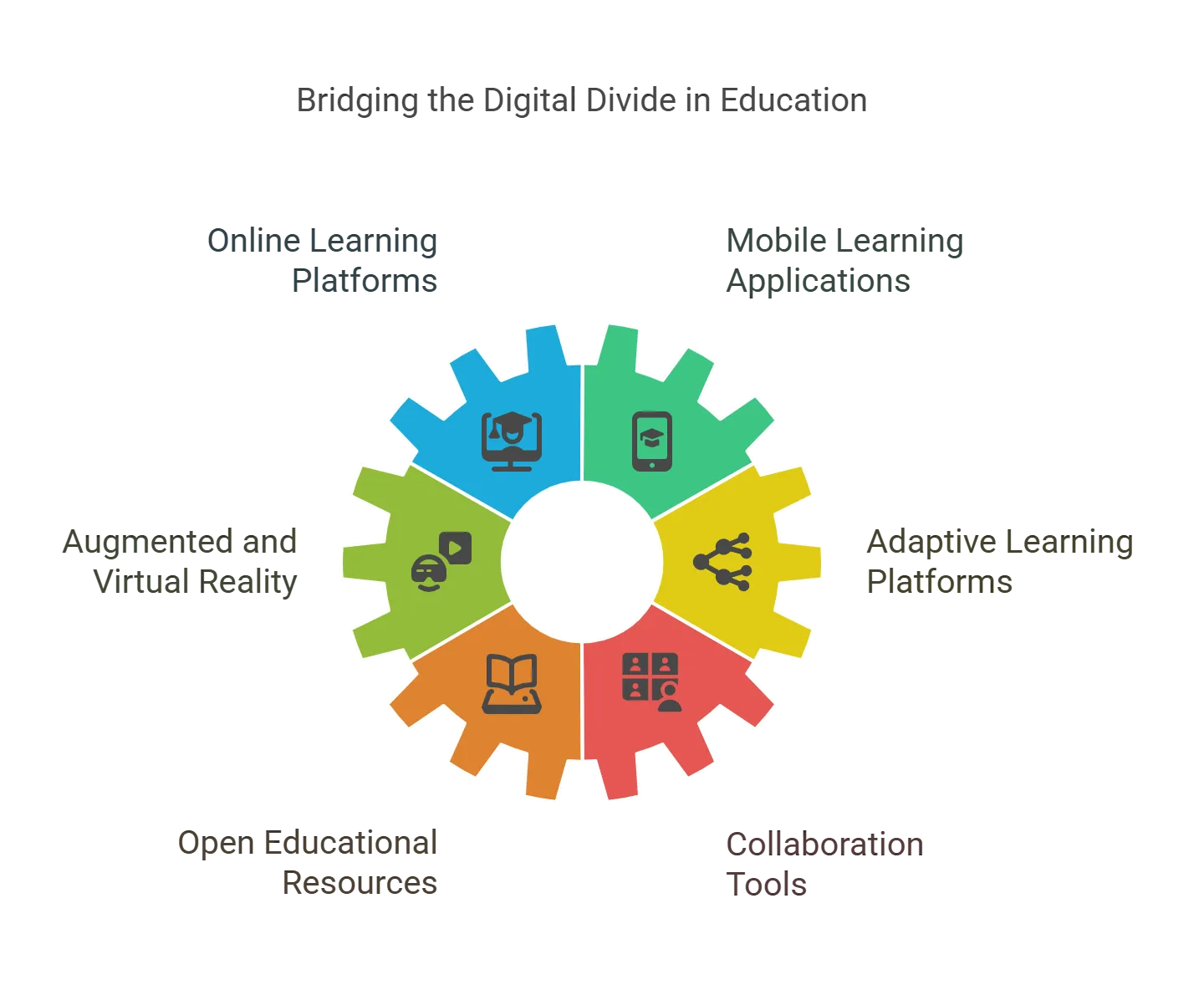
1. Utilize Online Learning Platforms
Teachers can share resources and assignments with students from a central location with the help of online learning platforms like Google Classroom.
In the same way, students can easily participate in remote learning. It is accessible from any device with an internet connection, regardless of geographical barriers.
2. Opt for Mobile Learning Applications
Mobile learning has a prospective 73% increase in efficiency. Applications such as Duolingo, Quizlet, and Kahoot! can be helpful in this regard. They aim to engage students through gamified learning.
These apps can be accessed on smartphones and tablets. Therefore, even students without proper access to a computer or a reliable internet connection at home can still use them.
3. Check Out Augmented Reality (AR) And Virtual Reality (VR)
These technologies enable immersive learning environments in the classroom. Owing to the popularity of AR and VR, their demand is anticipated to expand by $62 billion by 2029.
With the aid of AR/VR, students can experience virtual worlds, visualize difficult ideas, and participate in interactive learning activities that may not be feasible in a conventional classroom.
4. Use Adaptive Learning Platforms
Adaptive learning platforms provide personalized learning experiences, which consider each student’s unique strengths and shortcomings.
These platforms track student progress using data analytics and offer customized feedback to help students advance their skills.
5. Register at Open Educational Resources (OER)
OER platforms provide teachers with free, openly licensed educational resources that they can share and alter. They can obtain excellent resources without spending extra money by utilizing open educational resources (OER).
6. Bring in Collaboration Tools
These enable virtual interactions between educators and students. Examples of such tools are Microsoft Teams, Zoom, and Slack.
Students feel more engaged when they can work together on group projects, share files, and communicate in real time using collaboration tools.
The Importance of Procurement in Education
Why think about proper workforce procurement in education at all? Here are the five key reasons that impact the result of your institution in terms of student success and education satisfaction:
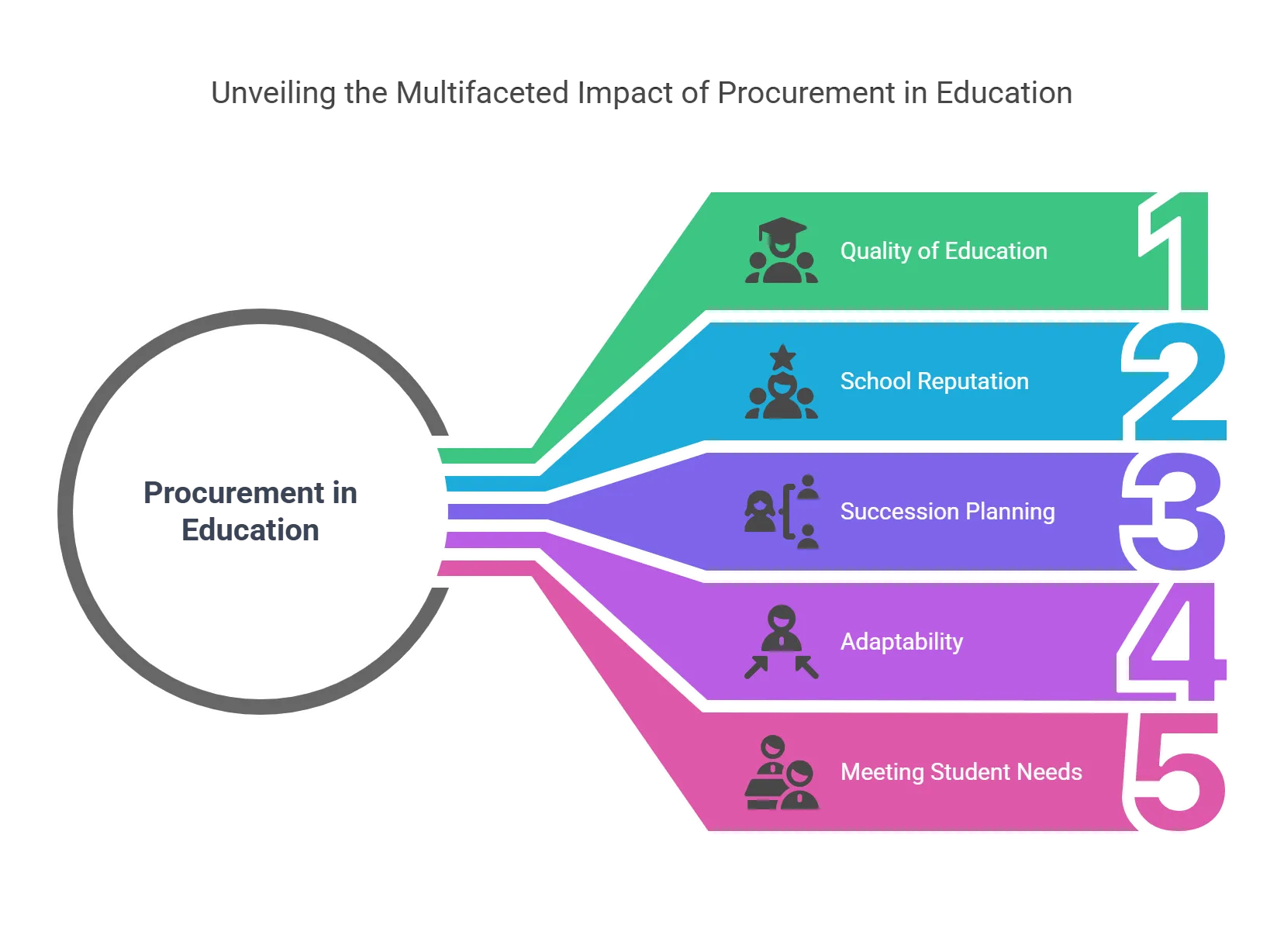
1. Quality of Education
A procurement strategy prioritizes quality education in the hiring process. The entire workforce is hired around this requirement, ensuring that teachers’ skills are passed on to students as a learning benefit.
2. School Reputation
Attracting, hiring, and retaining top-tier educators and workforce helps your K12 institution build a good reputation in your community and beyond. This is particularly helpful in attracting more enrolments year on year and expanding the reach of quality education that you provide.
3. Succession Planning
Procurement strategies sometimes extend to planning successions within the institution itself. Policies and guidelines are established that help hone future leaders and prepare them to step into their respective roles when the time comes.
4. Adaptability
When it comes to hiring staff for the long term, adaptability is a key procurement strategy. This allows the institution to plan for flexibility in hiring to cater to specific demographics, curriculum, or educational trends.
5. Meeting Student Needs
The most crucial aspect of procurement strategies is the need to address student requirements. A well-rounded K12 educational workforce considers diversity and inclusion to ensure that all students can learn equitably.
5 Crucial Education Procurement Strategies
K12 workforce development requires deliberate thinking and thorough planning for success. Leverage the five key strategies below to enhance K12 education by hiring the best staff possible:
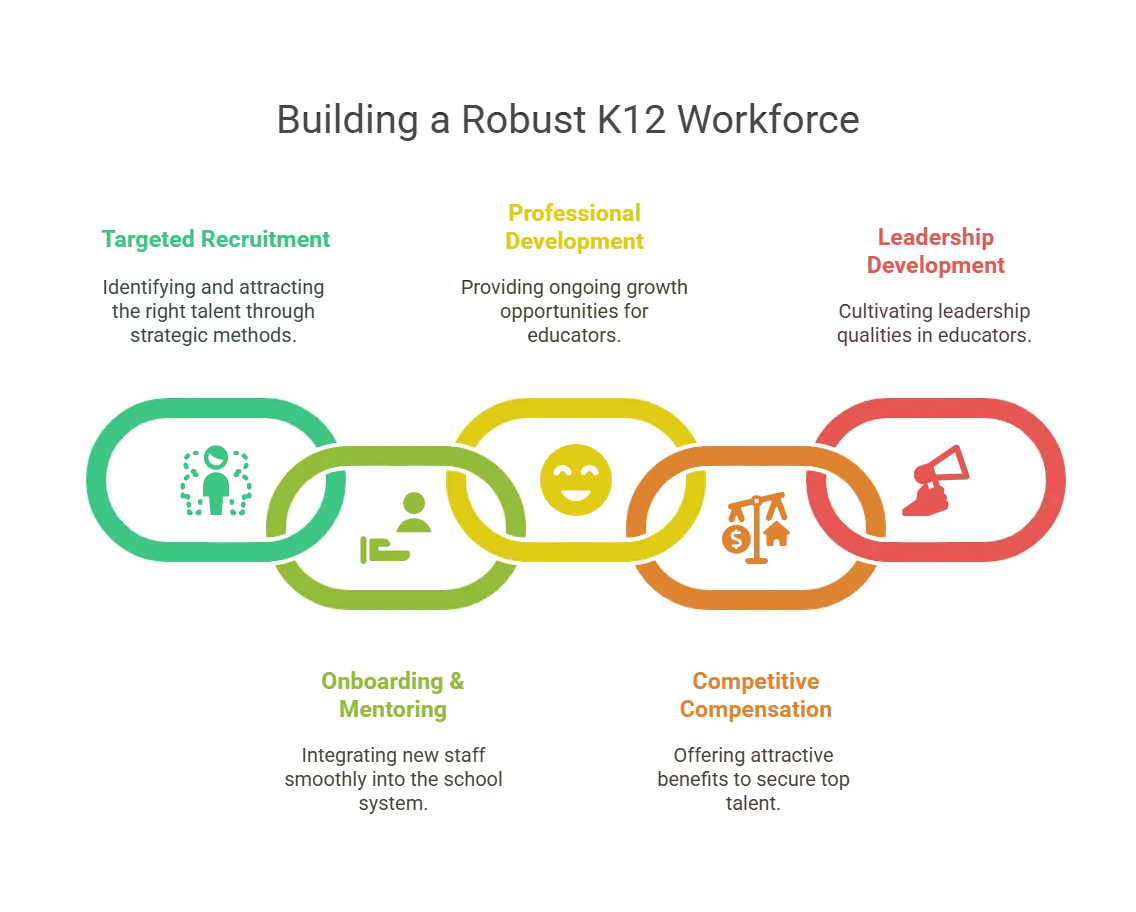
1. Target Your Recruitment Drive
The first step to developing a robust procurement strategy is to identify your institution’s and students’ needs. Make a list of your institution’s goals, student requirements, and educational needs before you create a detailed job description.
Consider leveraging the power of social media to propagate your job requirements in addition to the formal recruitment channels. If your needs are specialized (like hiring teachers for special-needs students), consider partnering with a headhunter to recruit from the best talent available in your area.
2. Fortify Onboarding, Inductions, and Mentoring
A good procurement strategy doesn’t stop after the candidates have been selected for their positions. It also includes detailed guidance and an onboarding letter that helps them smoothly integrate into school systems.
A comprehensive onboarding and induction program can help new teachers quickly familiarize themselves with your school’s processes, workflows, and systems. This can help reduce the time it takes for them to start performing at their peak and deliver their educational value to the students.
3. Provide Ongoing Professional Development
It is also important to include teacher development and training programs when designing a procurement strategy. If you want to retain your K12 educational workforce for the long term, you must provide them with development and growth opportunities.
Consider organizing workshops, conferences, online courses, etc., and mentioning them in the onboarding letters. It is important to understand that it can become difficult to keep your educators engaged without organizing growth opportunities for your workforce.
4. Consider Competitive Compensation
Competitive compensation refers to employee benefits like healthcare, retirement plans, professional development opportunities, etc. A good procurement strategy should use these incentives to attract the most capable workforce in the area to your school.
If you do not have any of these compensation programs in place, it would help to launch them before your hiring drive to attract better talent.
5. Provide Teacher Leadership Development
While most procurement strategies conclude after describing onboarding details, the really good ones go a step further and guide teacher leadership development as well.
These programs help create an inclusive and collaborative culture, which helps identify natural leadership qualities in new recruits. Thus, emerging leaders can be easily identified and assigned roles with more complicated processes that they can handle well.
3 Best Practices for Building a K12 Educational Workforce
Even with a robust procurement strategy in place, implementation can get complex to understand. Here are three key best practices you can follow to ensure that everything goes as planned:
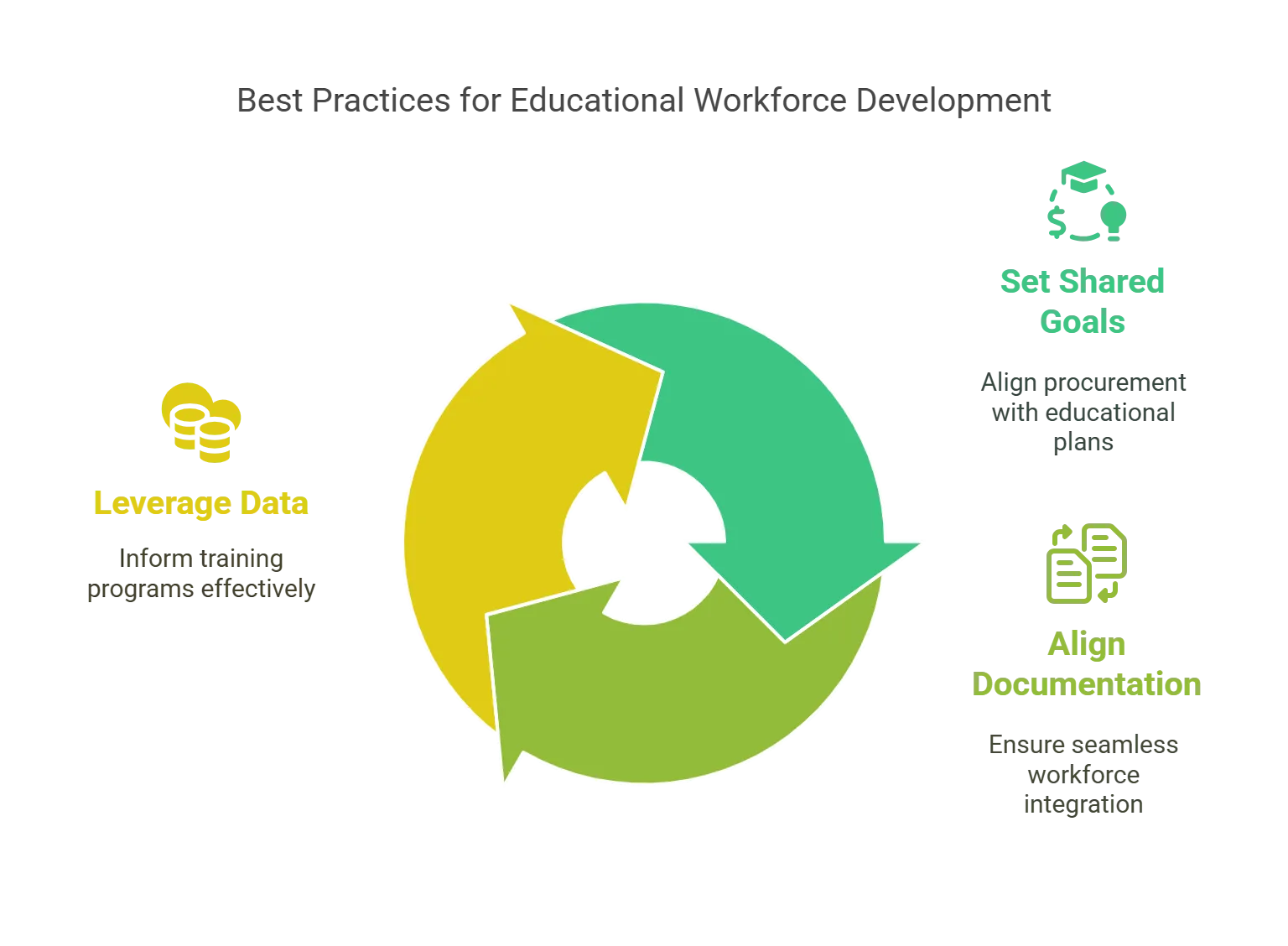
1. Set Shared Goals
Schools are primarily centers for education, but also institutions that need to consider sustenance and growth. Therefore, it helps to align procurement strategies with the broader educational and growth plans laid out for the institution over the long haul. For example, investing in educators adept at digital pedagogies wouldn’t break even until the IT infrastructure has been implemented successfully.
2. Align the Documentation
Every institution follows a set of policies, protocols, and other documentation that serve as a guidance mechanism in the face of challenges. It helps to align the procurement strategies with this documentation to create a seamless connection between hiring, onboarding, assimilation, and development of the workforce.
3. Leverage Data to Inform Training Programs
All teacher development and training programs can only be effective if their impact can be measured and improved. This is possible by selecting and implementing the right technology stack that helps you gather data from teachers, their performance, and their impact on school results.
The right tools help you collate and analyze data from various sources and generate insights that help you provide the most relevant training and development programs.
Conclusion
Educators, parents, and the community working together will help K12 students be ready for college. We can provide students with the tools they need to thrive in higher education by implementing strong K12 education strategies, emphasizing study skills development, offering job exploration chances, offering college prep programs, and offering strong student support services.
Hurix Digital‘s several strong learning tools enable students to find the learning environment more engaging and efficient. Get in touch now to find out how creative ideas can help prepare K12 students for higher education.
Summarize with:

Senior Vice President – Business Development
at Hurix Digital, with over 25 years of experience in EdTech and workforce learning. He excels in business development, customer relationship management, and scaling digital learning solutions, driving global growth through innovative content, simulations, and AI‑driven training offerings
 Upcoming Masterclass | Build an Army of Brand Evangelists using Training & Development | November 20th, 8:30 AM PDT | 11:30 AM EDT | 10:00 PM IST
Upcoming Masterclass | Build an Army of Brand Evangelists using Training & Development | November 20th, 8:30 AM PDT | 11:30 AM EDT | 10:00 PM IST

